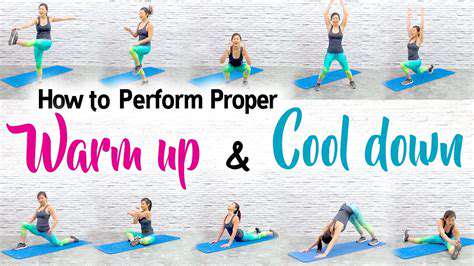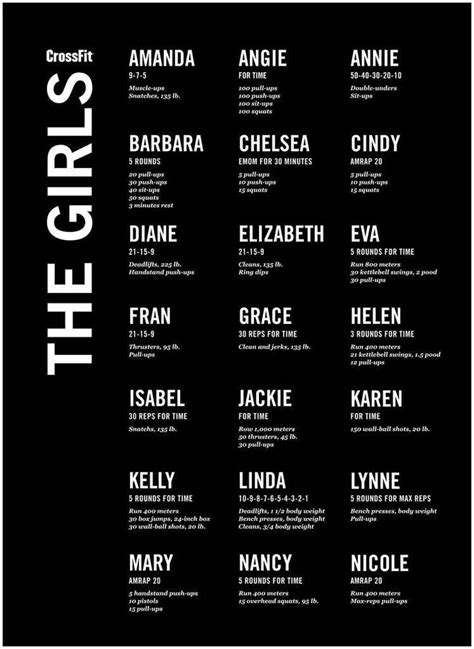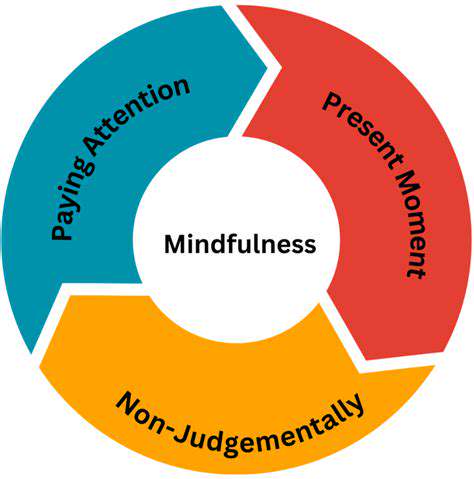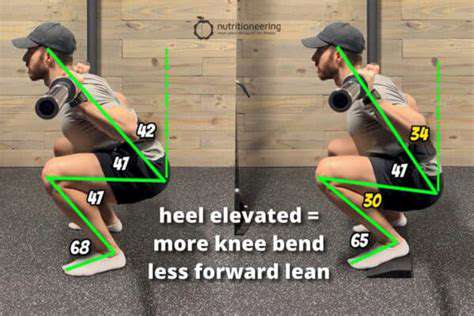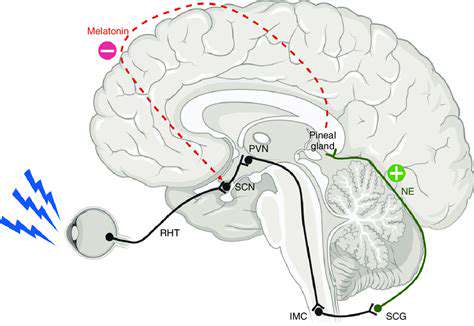Best Exercises for Cyclists to Build Strength
Core Engagement for Enhanced Cycling Performance
Core engagement is crucial for cyclists of all levels, from recreational riders to professional racers. A strong core not only improves power transfer and efficiency during pedaling but also contributes significantly to stability and balance, especially during challenging terrain or when maneuvering in tight spaces. Developing core strength directly translates to better control over your bike, allowing for smoother transitions and more precise steering. This enhanced control is especially beneficial in navigating technical climbs or descents, where maintaining balance is paramount to preventing falls and injuries.
Strengthening your core muscles, including your abdominal muscles, lower back muscles, and obliques, is vital for preventing injuries commonly associated with cycling. Over time, repetitive motions and prolonged sitting on the bike can strain these muscles, leading to discomfort and potential long-term issues. By actively engaging your core during rides, you're essentially bracing your body against these stresses, promoting better posture, reducing muscle fatigue, and minimizing the risk of back pain, hip pain, and other common cycling ailments. A strong core also aids in maintaining a more aerodynamic position, which, in turn, can enhance your overall cycling performance.
Targeted Exercises for Cyclist Core Strength
Incorporating specific exercises into your training regimen can significantly improve your core strength for cycling. Planks, for example, are excellent for building core stability and endurance. Holding a plank position engages numerous core muscles, promoting strength and endurance. Similarly, exercises like Russian twists and bicycle crunches target abdominal muscles, enhancing rotational power and stability, which is critical for maintaining balance and power while cycling.
Another key exercise is the dead bug. This exercise isolates the core muscles, improving activation and control. By engaging in these exercises regularly, you can gradually build the strength and endurance required for optimal cycling performance. Remember to maintain proper form during each exercise to maximize effectiveness and minimize the risk of injury. Progressive overload is also important. As you get stronger, gradually increase the difficulty or duration of these exercises to continue challenging your muscles.
Beyond the Gym: Core Engagement in Cycling
Core engagement isn't limited to the gym. Integrating core strengthening principles into your cycling routine can yield significant results. Consciously engaging your core muscles while riding, especially during climbs, can dramatically improve your power transfer and efficiency. Imagine drawing your belly button towards your spine, engaging your lower back muscles, and maintaining a stable posture throughout the ride. This conscious effort enhances your ability to efficiently generate power and maintain a smooth, controlled pedaling motion.
Furthermore, incorporating hills into your training routes provides a natural resistance workout, effectively challenging your core muscles. The effort required to maintain balance and control on uneven terrain strengthens your core muscles in a way that traditional exercises often cannot replicate. As you progress in your cycling training, consider adding intervals or tempo rides to further challenge your core and build endurance. These variations in your cycling routine can significantly enhance your overall core strength, leading to improved performance and a more enjoyable cycling experience.
Lower Body Power: Leg Strength and Explosiveness
Building Explosive Power in Your Legs
Developing explosive power in your legs is crucial for cyclists, enabling faster acceleration, more powerful sprints, and improved climbing ability. This isn't just about brute strength; it's about the rapid, forceful contractions needed for peak performance. Exercises focusing on plyometrics, like box jumps and depth jumps, are highly effective. These exercises train your muscles to contract explosively, mimicking the demands of cycling sprints and hill climbs. Proper form is paramount to avoid injury, so ensure you're performing these movements with controlled precision, focusing on the rapid and powerful extension of your legs.
Beyond plyometrics, incorporating exercises like weighted squats and lunges with explosive movements can significantly boost lower body power. By adding weight, you're challenging your muscles to produce greater force. Focus on the concentric (lifting) portion of the movement, driving through your heels and engaging your core for stability. This approach not only builds strength but also enhances the power output of your leg muscles, directly translating to improved cycling performance.
Strengthening Your Leg Muscles for Endurance
While explosive power is important, sustainable strength is just as crucial for long-distance cycling. Exercises that target the major muscle groups in your legs, such as the quads, hamstrings, and glutes, build endurance and prevent fatigue during extended rides. Consider exercises like barbell back squats, Romanian deadlifts, and leg presses. These exercises build strength across the entire lower body, promoting stability, and reducing the likelihood of injury during prolonged cycling sessions.
Targeted exercises that specifically engage the muscles used in cycling are also beneficial. Think about incorporating exercises that mimic the pedaling motion, like seated leg extensions, hamstring curls, and glute bridges. These focused movements strengthen the specific muscles responsible for pedaling, improving efficiency and power output over extended periods, which is essential for tackling long-distance races or challenging climbs.
Improving Cycling-Specific Strength
Beyond general leg strength, consider exercises that directly mimic the movements of cycling. This includes exercises like stationary bike sprints, hill climbs, and resistance training exercises on a stationary bike. These exercises improve your ability to produce power and maintain that power throughout an extended period. This is an integral part of the training regimen for cyclists, as it directly translates to improved performance on the bike.
Incorporating these exercises into your training regimen will improve your ability to maintain power output over longer distances. By strengthening the muscles used in cycling, you can avoid fatigue and maintain a higher level of performance throughout the ride. The improvements will lead to better endurance, allowing you to push harder and longer in the saddle.
Upper Body Strength for Efficient Cycling
Building a Strong Foundation
Developing upper body strength is crucial for cyclists, as it contributes significantly to overall cycling performance and injury prevention. A strong upper body helps maintain a more efficient pedaling technique, reducing strain on the lower body and core. This translates to improved power output, greater endurance, and a more comfortable ride over extended distances. By incorporating upper body exercises into your routine, you're not just targeting specific muscles but also enhancing the stability and control needed for navigating challenging terrains and maintaining a consistent cadence.
Stronger shoulders, back, and arms provide better posture and balance while cycling. This crucial support system prevents fatigue and discomfort, allowing you to maintain optimal form and power output throughout the ride. A well-rounded upper body program will also boost your overall fitness, leading to a more enjoyable and effective cycling experience.
Targeted Exercises for Cyclists
A variety of exercises can be incorporated into a cyclist's training regimen to build upper body strength. Pull-ups, for instance, are excellent for targeting the back muscles, which are vital for maintaining posture and power during cycling. Rows, whether using dumbbells or a resistance band, work the back, biceps, and forearms, providing strength and endurance critical for efficient pedaling. Overhead presses help strengthen the shoulders, increasing stability and control over the handlebars.
In addition to these exercises, consider incorporating exercises like push-ups, dips, and lateral raises for a more comprehensive upper body workout. These exercises work various muscle groups, enhancing overall strength and stability, which is essential for maintaining balance and control on the bike, especially on rough terrain or during sudden changes in speed. Remember to focus on proper form and controlled movements to maximize effectiveness and minimize risk of injury.
Importance of Upper Body Strength in Cycling Performance
Upper body strength isn't just about aesthetics; it plays a significant role in enhancing your cycling performance. By increasing the strength of your back, shoulders, and arms, you improve your overall cycling efficiency. A stronger upper body helps you maintain a more stable and controlled position on the bike, allowing for a more consistent pedaling rhythm. This translates to a more powerful and efficient ride, crucial for tackling hills, maintaining speed, and maximizing your endurance. Furthermore, upper body strength contributes to a more comfortable ride, reducing strain and fatigue, especially during long rides.
Stronger upper body muscles also help absorb the shock of uneven terrain, reducing stress on the lower body joints. This is particularly beneficial for cyclists who regularly ride on rough roads or trails. By focusing on upper body strength training, you're not only enhancing your cycling performance but also minimizing the risk of injury and maximizing your overall enjoyment of the sport.
Beyond the Gym: Cycling-Specific Strength Training
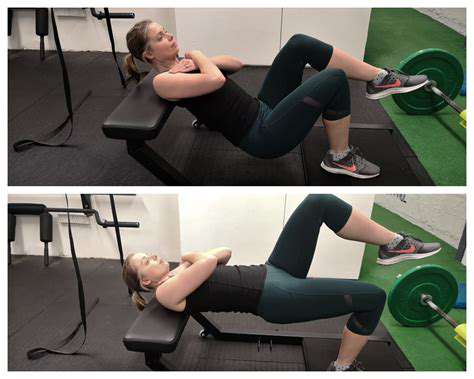
Beyond the Base: Building Strength for Enhanced Cycling Performance
Cycling, while seemingly a purely cardiovascular activity, demands significant strength for optimal performance. Ignoring strength training can hinder your progress and even increase your risk of injury. Building a strong core, legs, and even upper body is crucial for efficient pedaling, maintaining a stable position, and handling challenging terrain. This strength translates directly to power output, endurance, and overall cycling enjoyment.
Nutrition for Peak Cycling Performance
Fueling your body correctly is essential for any athlete, and cycling is no exception. A balanced diet rich in complex carbohydrates, lean protein, and healthy fats provides the necessary energy for sustained effort. Moreover, adequate hydration is paramount. Proper nutrition can significantly improve your endurance and power output, allowing you to push your limits and achieve your cycling goals.
Cycling-Specific Stretching & Mobility
Stretching and mobility exercises are often overlooked but are critical for preventing injuries and optimizing performance. Focusing on specific muscle groups targeted by cycling, such as hamstrings, quads, calves, and hip flexors, will enhance flexibility and range of motion. This not only reduces the risk of strains and pulls but also improves power transmission and overall comfort during extended rides. Regular stretching sessions are key.
Advanced Cycling Gear for Enhanced Performance
Beyond the essentials, specialized cycling gear can significantly enhance your experience and performance. Consider investing in aerodynamic clothing, specialized cycling shoes with cleats, and even adjustable bike seats to optimize comfort and efficiency. Advanced gear can reduce drag, improve pedaling mechanics, and enhance your overall ride.
Mental Fortitude in Cycling
Cycling is not just about physical strength; mental fortitude plays a vital role. Developing mental resilience allows you to overcome challenging climbs, navigate tricky situations, and push past perceived limits. Effective strategies for mental preparation, like visualization and positive self-talk, can significantly impact your overall cycling experience. Maintaining a positive mindset is crucial for staying motivated and achieving your goals.
Cycling-Specific Recovery Strategies
Efficient recovery is just as important as training itself. Implementing active recovery methods, such as light cycling or walking, can help flush out lactic acid and promote muscle repair. Prioritizing sleep and incorporating recovery techniques like foam rolling and massage therapy can significantly improve your body's ability to adapt to training stress. Adequate rest and recovery are fundamental for avoiding overuse injuries and maximizing your training progress.
The Importance of Regular Bike Maintenance
Regular bike maintenance is often underestimated but is crucial for optimal performance and safety. Checking tire pressure, lubrication, and component functionality are essential for a smooth and efficient ride. Proper maintenance can prevent unexpected breakdowns and ensure you can fully enjoy your cycling adventures. Investing time in maintaining your bike will extend its lifespan and ensure a smoother riding experience.
Rest and Recovery: The Foundation of Progress
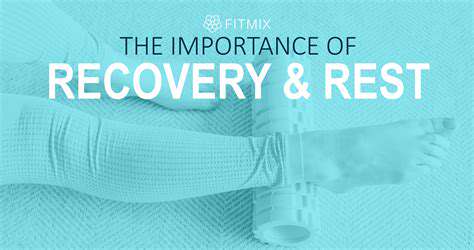
Prioritizing Sleep
Adequate sleep is crucial for physical and mental restoration. A well-rested body is better equipped to handle daily stressors and maintain optimal cognitive function. Lack of sleep can negatively impact mood, concentration, and overall performance. Aiming for 7-9 hours of quality sleep each night is essential for supporting your body's natural recovery processes. Creating a relaxing bedtime routine and ensuring a conducive sleep environment can significantly improve sleep quality. Consistent sleep schedules are also key to regulating your body's natural sleep-wake cycle.
Sleep deprivation can lead to a cascade of negative consequences, impacting both physical and mental health. Chronic sleeplessness can increase the risk of various health issues, including cardiovascular problems, weakened immunity, and even mental health disorders. Prioritizing sleep is not just about feeling good; it's about actively maintaining your overall well-being.
Nourishing Your Body
Proper nutrition plays a vital role in supporting recovery. A balanced diet rich in fruits, vegetables, lean proteins, and whole grains provides the necessary nutrients for tissue repair and energy production. Choosing nutrient-dense foods is crucial for optimal recovery and overall health. Hydration is also essential for many bodily functions, including waste removal and nutrient transport. Drinking plenty of water throughout the day is vital for maintaining optimal bodily functions.
Focusing on whole foods over processed options can significantly improve your body's ability to recover. Consuming adequate amounts of vitamins and minerals helps support the repair of tissues and cells, aiding in the recovery process. A diet rich in antioxidants can also help combat the effects of oxidative stress, a byproduct of physical activity and general daily living.
Active Recovery Techniques
Incorporating active recovery techniques, such as light stretching, walking, or gentle yoga, can aid in muscle recovery and reduce soreness. These activities promote blood flow to the muscles, aiding in the removal of metabolic waste products and promoting tissue repair. Active recovery allows for the body to recover without placing significant stress on the muscles. This type of recovery is crucial for preventing injuries and optimizing performance.
Low-intensity activities can be beneficial in promoting blood flow and reducing muscle tension. These techniques can help prevent stiffness and soreness, promoting overall well-being. Light activities also contribute to a sense of relaxation and well-being, which can further support the recovery process.
Mindfulness and Stress Management
Chronic stress can significantly hinder the body's ability to recover. Practicing mindfulness techniques, such as meditation or deep breathing exercises, can help manage stress levels and promote relaxation. Stress reduction is vital for overall well-being and supports the body's natural recovery processes. Finding healthy ways to manage stress is essential for maintaining a balanced lifestyle. Stress management is a critical component of rest and recovery.
Identifying and addressing sources of stress is a key component of effective stress management. Developing coping mechanisms, such as time management techniques or healthy outlets for emotional expression, can contribute to a more balanced and resilient approach to stress. Mental well-being is just as important as physical well-being in the recovery process.
Read more about Best Exercises for Cyclists to Build Strength
Hot Recommendations
-
*Guide to Managing Gout Through Diet
-
*Best Habits for Financial Well being
-
*How to Build a Routine for Better Mental Health
-
*How to Eat Healthy on a Budget [Tips & Meal Ideas]
-
*Guide to Practicing Self Acceptance
-
*How to Incorporate More Movement Into Your Day
-
*Guide to Managing Chronic Pain Naturally
-
*Guide to Building a Reading Habit for Well being
-
*Top 5 Weight Loss Supplements That Actually Work
-
*Best Exercises for Postpartum Recovery [Beyond Abdominal Work]
![Best Books on Mental Health and Well being [Recommended Reads]](/static/images/26/2025-05/CultivatingSelf-CompassionandPositiveSelf-Talk.jpg)
